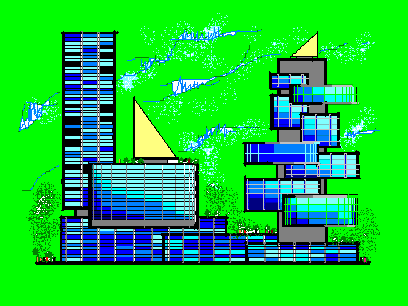|
Distance to the Lake: How to Price Amenities?
Stephen Chung Managing Director
Zeppelin Real Estate Analysis Limited
November 2005
Many friends and clients view their own properties better, and thus of higher value, than those owned by others, especially when they deem their properties offer certain convenience or amenities which the others do not. Such amenities could be easy access to subway stations, parks, good school districts and so on, and such amenities do sometimes bring in relatively better prices. This reminded your humble author of his days in grad school when a professor used the example of a frog and its distance to the lake. It went like this. Frogs need to be near water (ponds, lakes etc) for food and survival and they can only be so many feet away (maximum distance) from the water edge beyond which they may endanger their own well-being. Thus, if a frog is like a human and has money, it will tend to pay top price for a home right next to the lake (assuming it is not afraid of flood etc), a less than top but still good price for halfway through the maximum distance, and a lower (lowest) price for being at the maximum distance. Beyond this, rationally the frog will not pay anything because it cannot even survive there (theoretically it may even receive money for willing to risk its life living there). The above is not difficult to comprehend. What is slightly more complicated is the ¡¥price curve¡¦ i.e. the changes in the price level as the distance to the lake increases (or decreases depending on which direction one is going). While there could be numerous combinations for the curve, the following represent some of the basic ones: A) A straight line down (and without residual value) inversely proportional to the distance = let us say the maximum distance to the lake that a frog can tolerate and survive is 100 meters (or around 328 feet = we are no biologists so do not take this seriously). Let us also assume the frog has $100 to spend and that the livable distance closest to the lake starts from the 1 meter mark. In this scenario, and for neatness, the frog is willing to spend $100 at 1 meter mark, $51 for the 50 meter mark, and $1 for the 100 meter mark. ¡@ B) Slower price decreases initially but quicker pace of decreases as the distance to the lake increases = using the same assumptions, in the scenario the frog may still be willing to pay $80 even for the 80 meter mark i.e. only $20 (20% of money) was deducted despite having traveled 80 meters (80% of maximum distance) but then the remaining 20 meters (20% of maximum distance) will see a total drop of $80 (80% of money).
C) Faster price decreases initially but slower pace of price decreases as the distance to the lake increases = again using the same assumptions, in the scenario the frog behaves just the opposite to (B) above. The first 20 meters may already see some $80 being taken off, while the rest of the distance (80 meters) will witness only a total of $20 downward price change.
D) Hybrid = a combination of the above and the possibilities are many. For instance, it may drop slow initially up to the 30 meter mark, become a straight depreciation between the 31 and 70 meter marks, and then drop fast from the 71 meter mark. Naturally, the above scenarios are very simple and actual ones could be more complex. As to which curves would match what amenities, this requires comprehensive research and market observation. For instance, many residential projects highlight their proximity to public transportation systems or shopping malls, with one theme being ¡§convenience¡¨ i.e. one can walk there in comfort without the need to take a cab or bus. Thus, the walking effort required, especially in terms of ¡¥time¡¦, assuming the walk is reasonably pleasant (e.g. under cover and protected from weather elements), could be crucial. Yet this time requirement may differ from person to person, generation to generation, society to society, and so on. People in the 1960s would consider a 15-minute walk to be reasonable, yet people today may deem no more than 5 minutes to be acceptable. Hence speculatively, residences that offer 5-minute or less walks to subway stations, shopping malls etc may indeed attract more buyers and higher prices than similar residences nearby, yet this ¡¥premium¡¦ can drastically decrease or even be eliminated once beyond the 5-minute walk distance (or perception thereof). In addition, not only is this amenity ¡§premium¡¨ different to different home buyers, its assessment by individual buyers tends to be rough, say 1%, 2%, 5%, or 10% above the basic price, and rarely 1.26%, 2.95%, or 8.62% above some basic price. In short, the observed average amenity premium reflects the collective inclination of the market as a whole, not individual buyers¡¦ inclination. Notes: The article and/or content contained herein are for general reference only and are not meant to substitute for proper professional advice and/or due diligence. The author(s) and Zeppelin, including its staff, associates, consultants, executives and the like do not accept any responsibility or liability for losses, damages, claims and the like arising out of the use or reference to the content contained herein.
|
Phone (852) 37576388 Fax (852) 37576399 E-mail contact@real-estate-tech.com
Address c/o Zeppelin, Unit 1007, 10/F, CCT Telecom Building, 11 Wo Shing Street, Shatin, NT, Hong Kong
Copyright rests with Zeppelin and/or relevant authors
